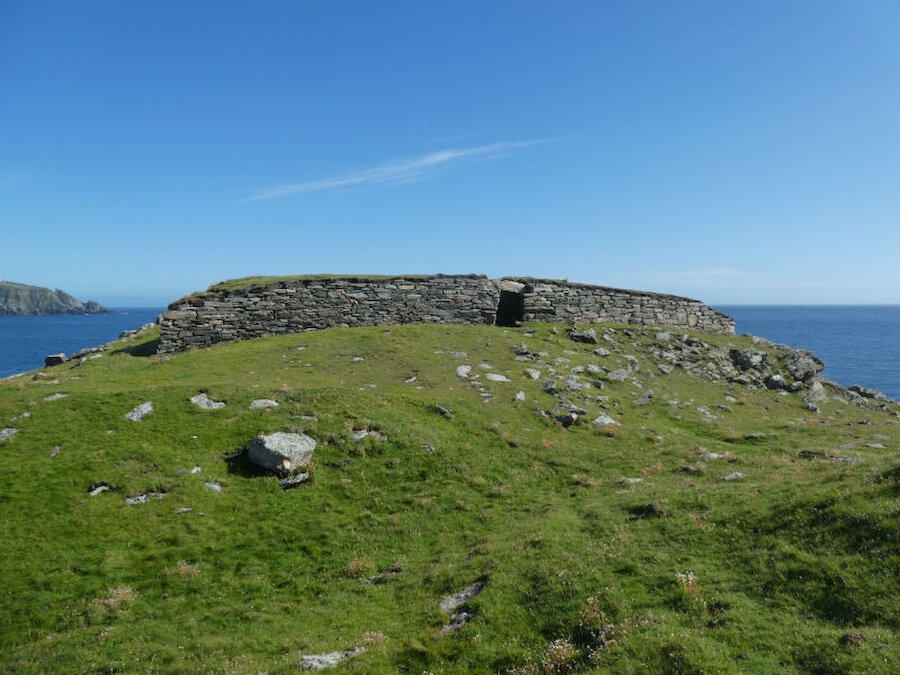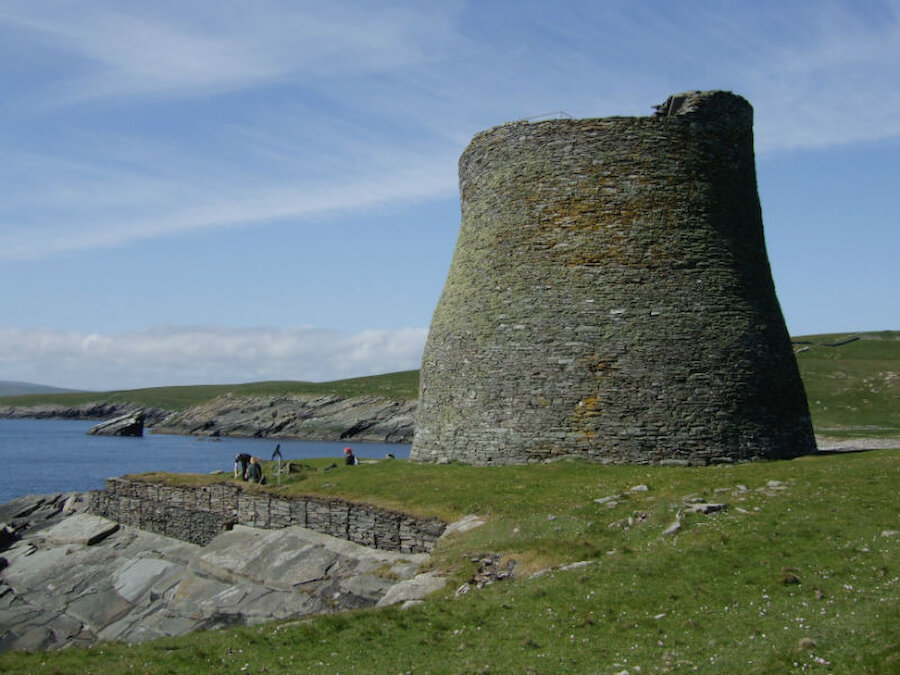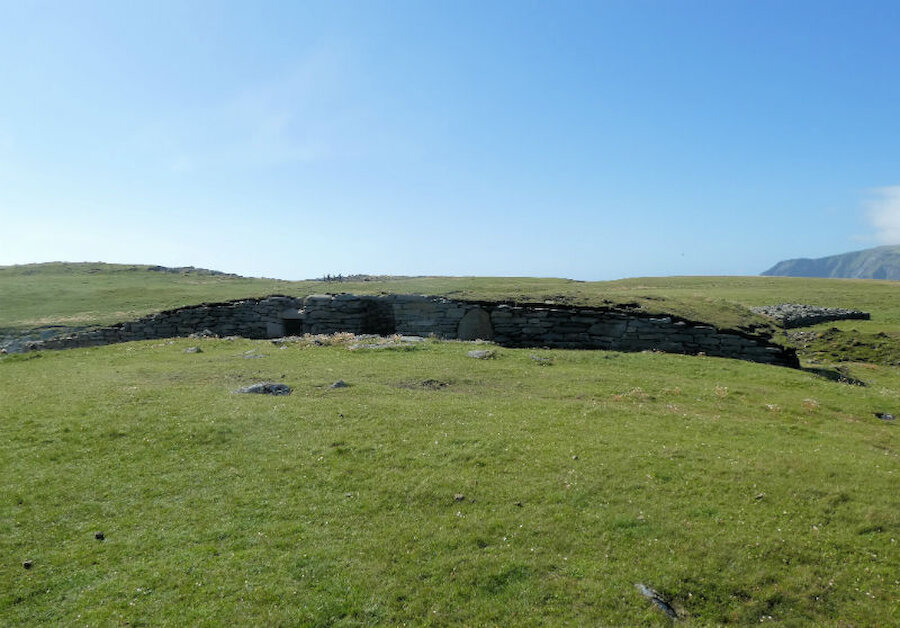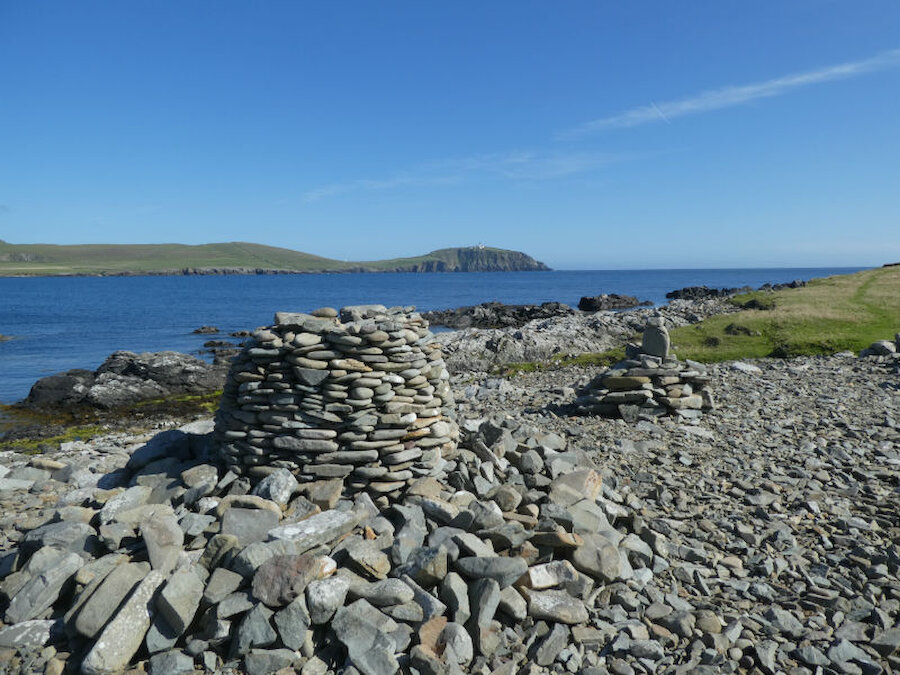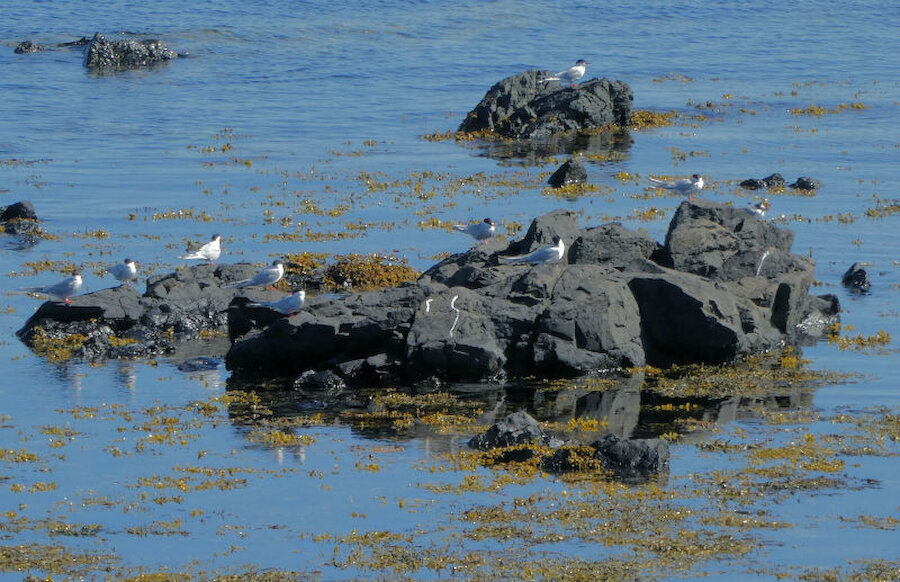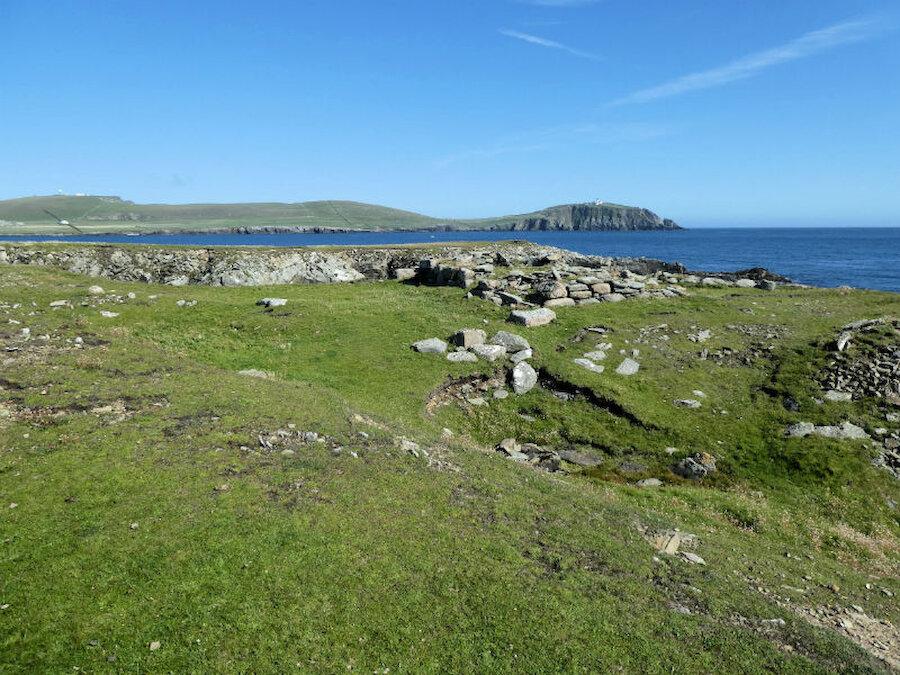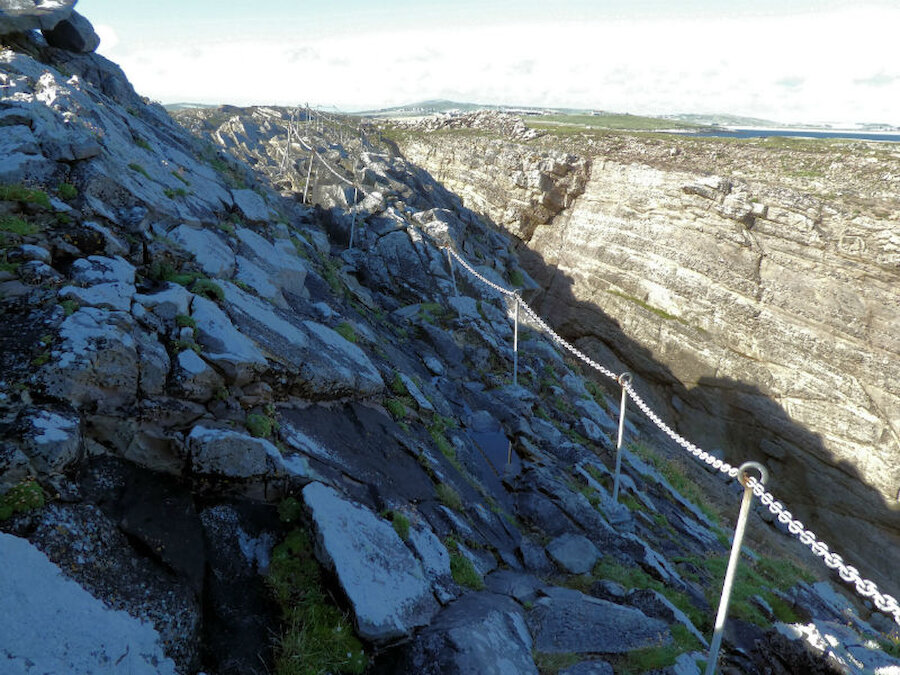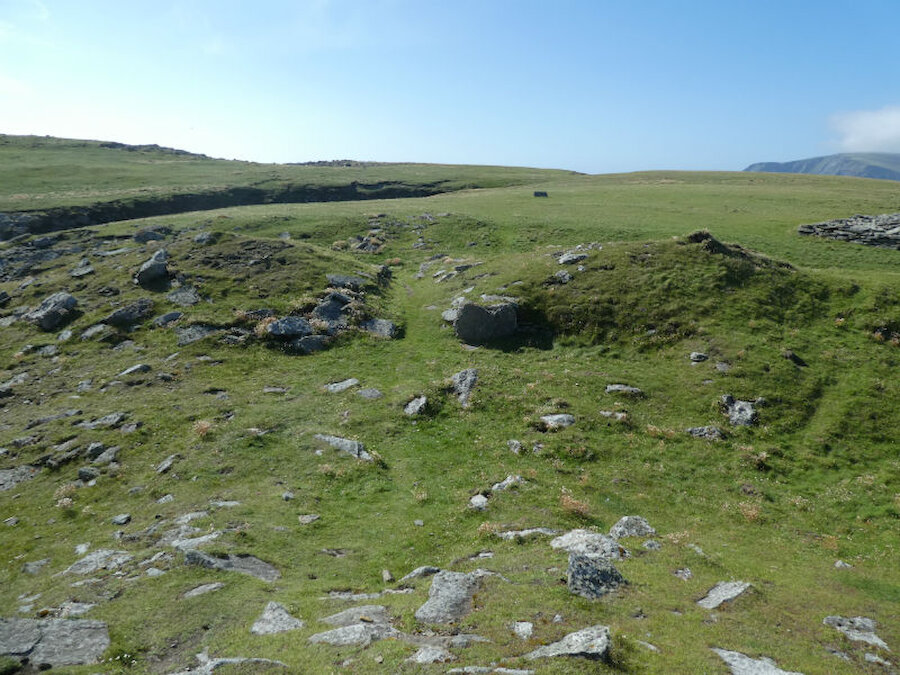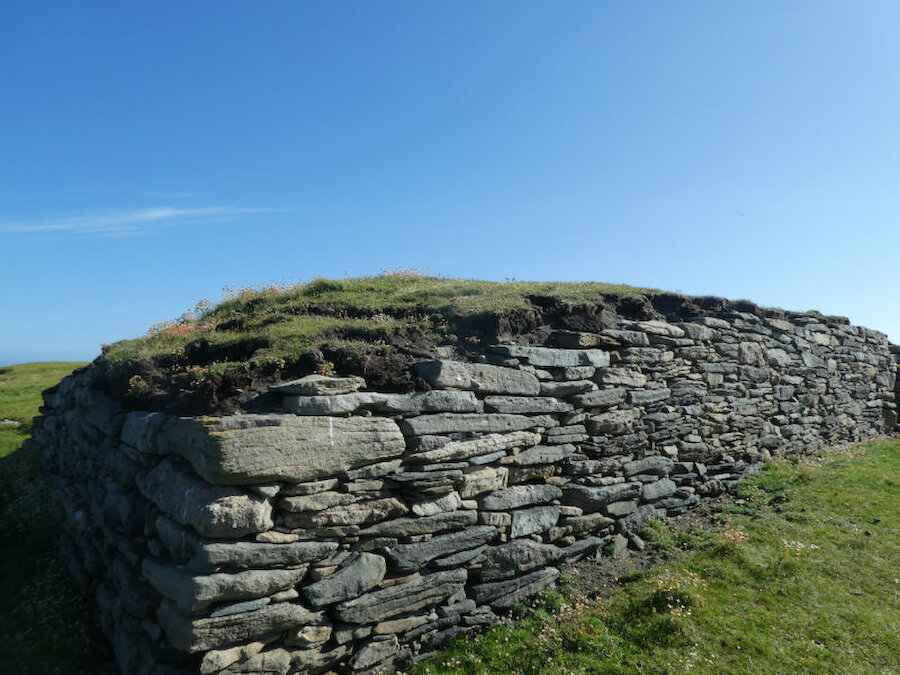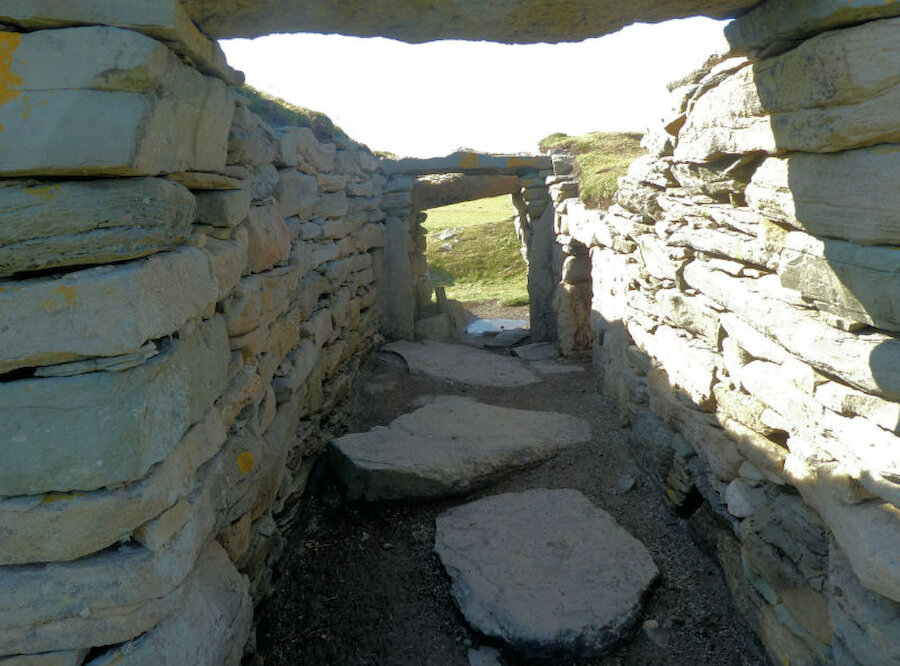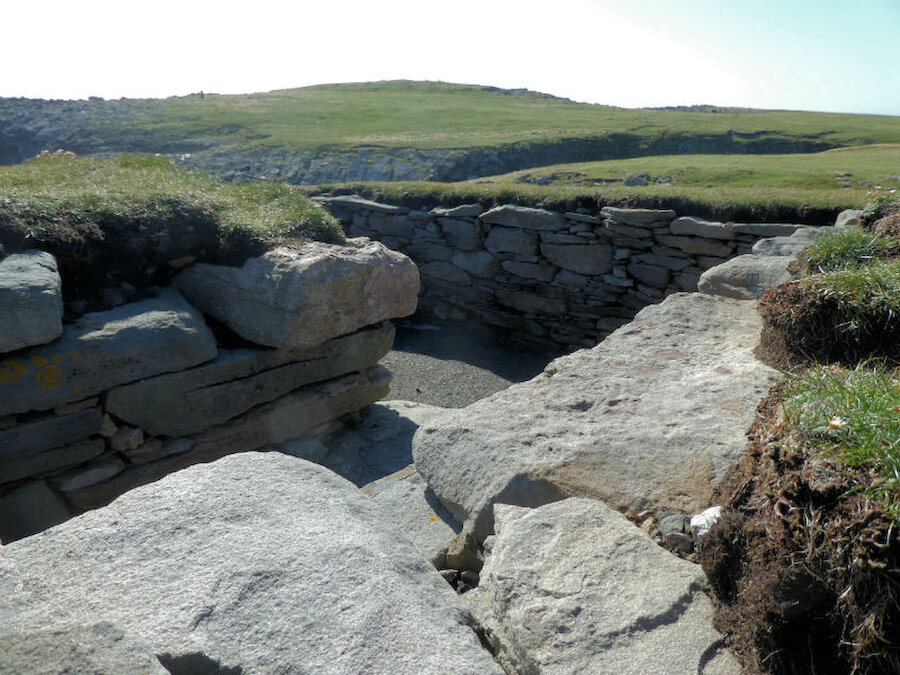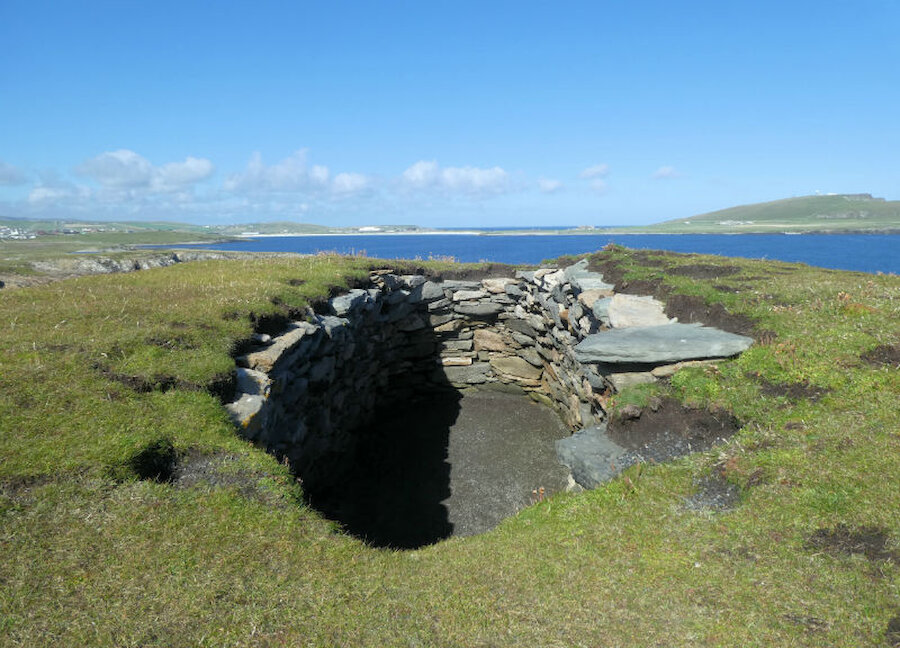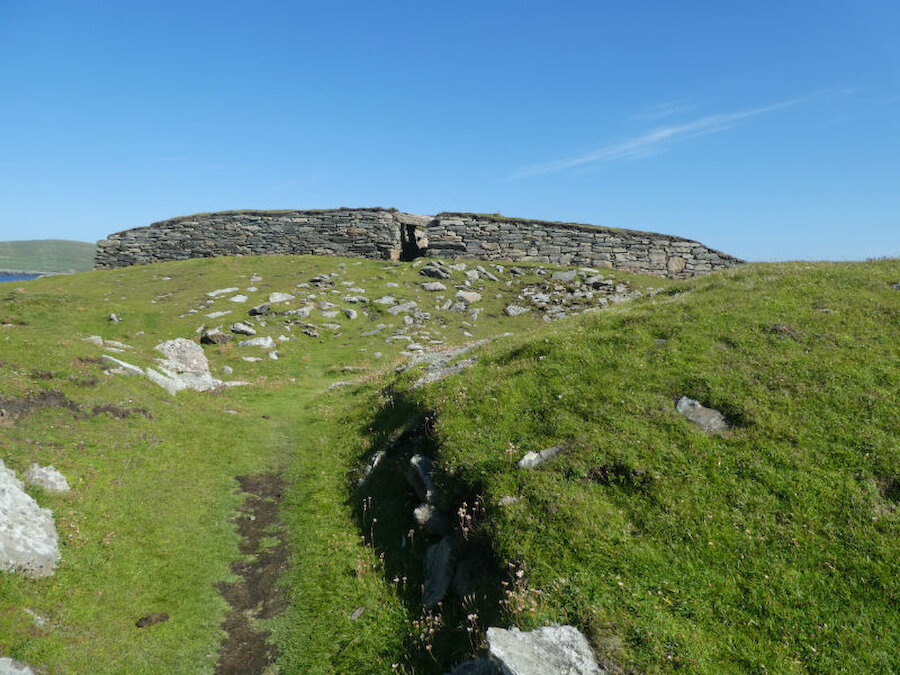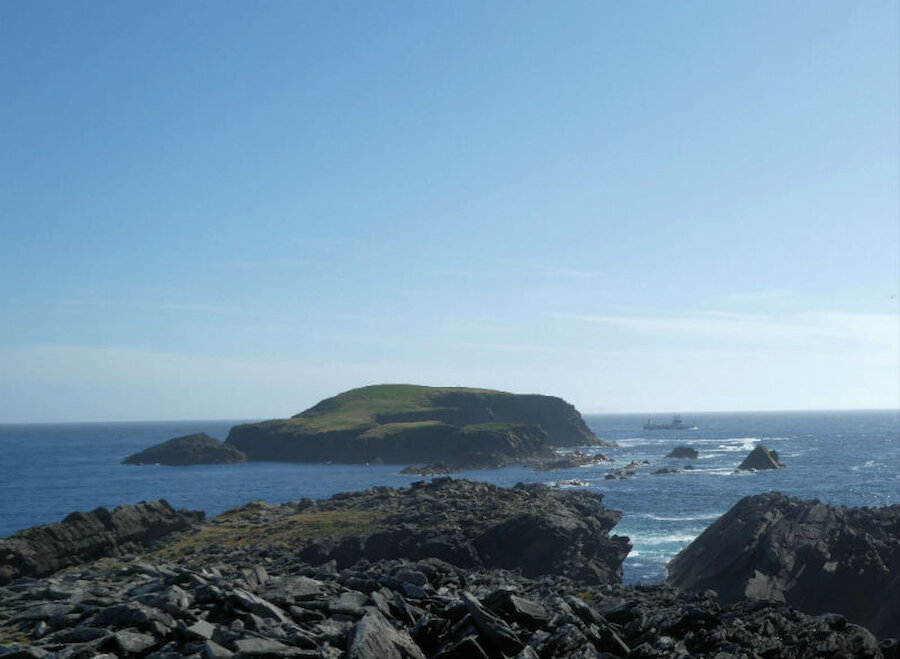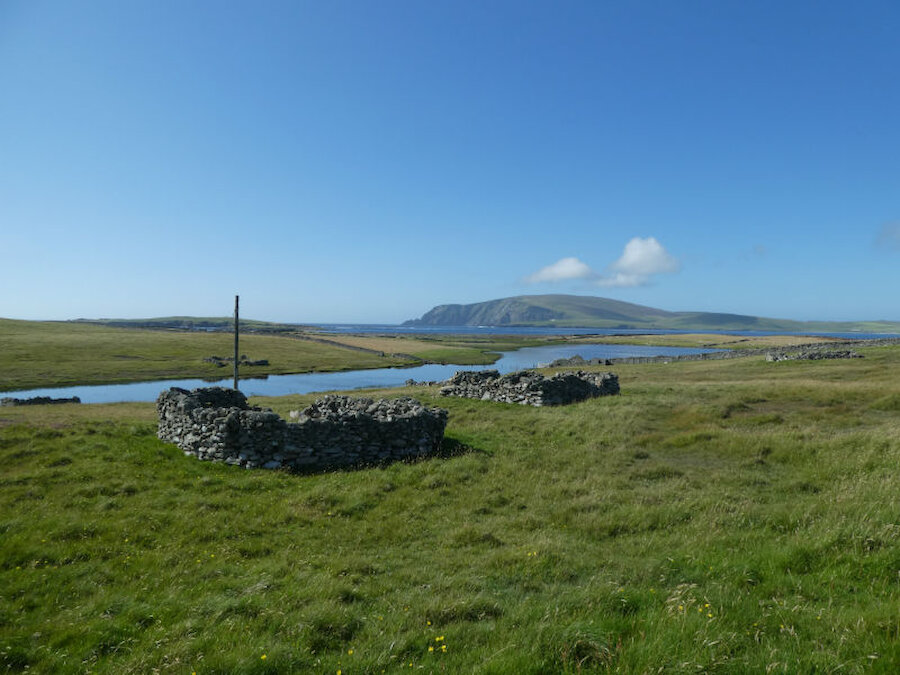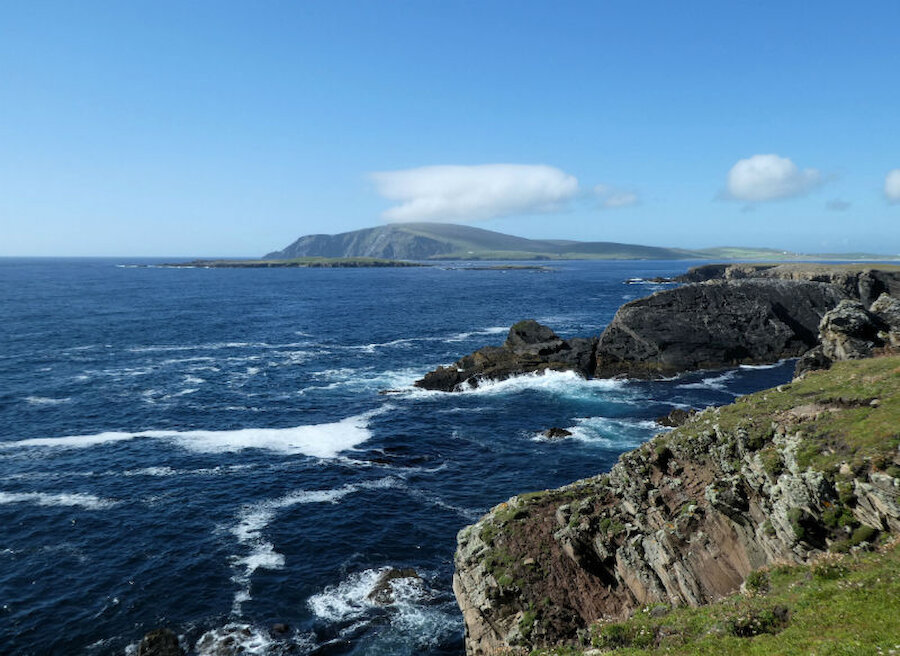Shetland has a rich and accessible archaeological record, spanning the period from Neolithic settlement to remains from the 20th century’s wars. Understandably, attention has often focused on the Viking period, which has left such a powerful legacy in dialect and placenames, not to mention some impressive sites; and of course it helps that there are written accounts of aspects of life in Viking times, including the sagas.
Yet other periods – earlier and later – are just as fascinating. Pre-Viking Shetland holds more mystery, with an abundance of field systems, other evidence of Neolithic and Bronze Age occupation and a wealth of Iron Age remains. From that last period, those that quite literally stand out are the hundred or so brochs – circular stone towers – that crop up in every corner of the islands. The best example anywhere is on the island of Mousa, off the coast at Sandwick, shown below.

